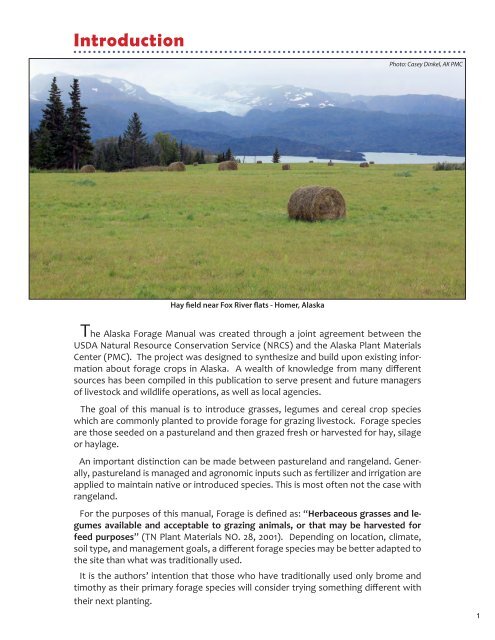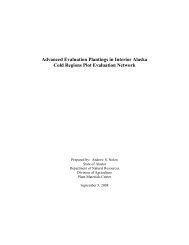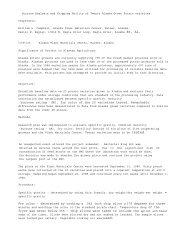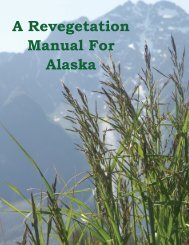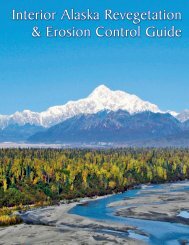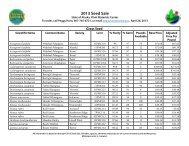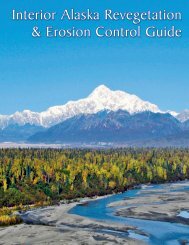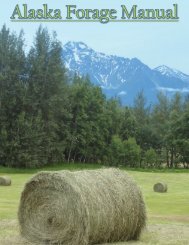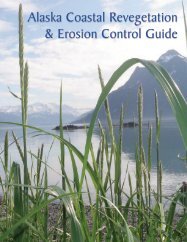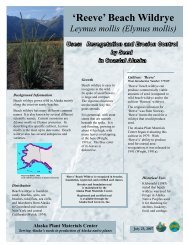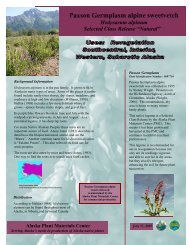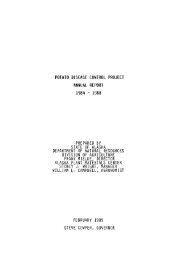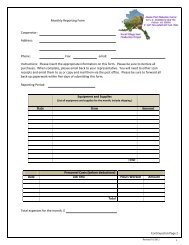Alaska Forage Manual - Alaska Plant Materials Center - State of ...
Alaska Forage Manual - Alaska Plant Materials Center - State of ...
Alaska Forage Manual - Alaska Plant Materials Center - State of ...
You also want an ePaper? Increase the reach of your titles
YUMPU automatically turns print PDFs into web optimized ePapers that Google loves.
Introduction<br />
Photo: Casey Dinkel, AK PMC<br />
Hay field near Fox River flats - Homer, <strong>Alaska</strong><br />
The <strong>Alaska</strong> <strong>Forage</strong> <strong>Manual</strong> was created through a joint agreement between the<br />
USDA Natural Resource Conservation Service (NRCS) and the <strong>Alaska</strong> <strong>Plant</strong> <strong>Materials</strong><br />
<strong>Center</strong> (PMC). The project was designed to synthesize and build upon existing information<br />
about forage crops in <strong>Alaska</strong>. A wealth <strong>of</strong> knowledge from many different<br />
sources has been compiled in this publication to serve present and future managers<br />
<strong>of</strong> livestock and wildlife operations, as well as local agencies.<br />
The goal <strong>of</strong> this manual is to introduce grasses, legumes and cereal crop species<br />
which are commonly planted to provide forage for grazing livestock. <strong>Forage</strong> species<br />
are those seeded on a pastureland and then grazed fresh or harvested for hay, silage<br />
or haylage.<br />
An important distinction can be made between pastureland and rangeland. Generally,<br />
pastureland is managed and agronomic inputs such as fertilizer and irrigation are<br />
applied to maintain native or introduced species. This is most <strong>of</strong>ten not the case with<br />
rangeland.<br />
For the purposes <strong>of</strong> this manual, <strong>Forage</strong> is defined as: “Herbaceous grasses and legumes<br />
available and acceptable to grazing animals, or that may be harvested for<br />
feed purposes” (TN <strong>Plant</strong> <strong>Materials</strong> NO. 28, 2001). Depending on location, climate,<br />
soil type, and management goals, a different forage species may be better adapted to<br />
the site than what was traditionally used.<br />
It is the authors’ intention that those who have traditionally used only brome and<br />
timothy as their primary forage species will consider trying something different with<br />
their next planting.<br />
1


